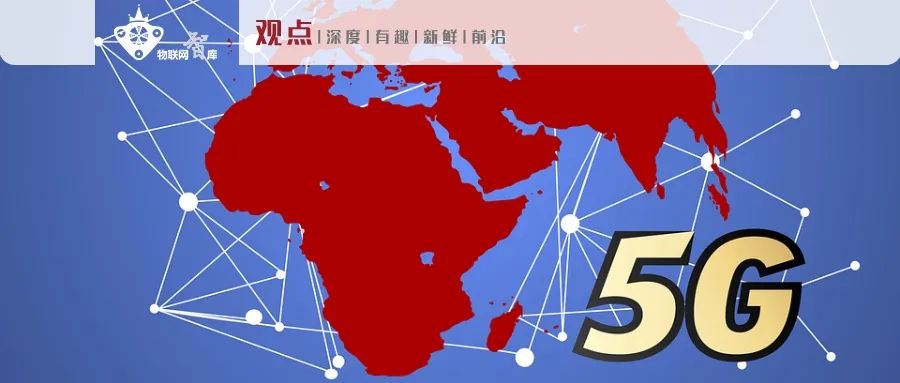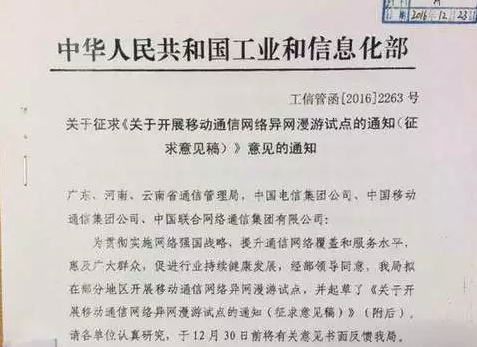

From the world's largest benchmark for 5G co-construction and sharing to the world's largest benchmark for 5G inter-network roaming

In March of this year, the Ministry of Industry and Information Technology issued the "Notice on Promoting the Accelerated Development of 5G", which clearly stated: "Carry out 5G network sharing and roaming across different networks, accelerate the formation of a network structure in which multiple networks coexist in hotspot areas and one network supports the bottom in remote areas, and build resources. Intensive and efficient 5G network.”
The investment in 5G infrastructure is huge, and network sharing and inter-network roaming are considered to be effective means to significantly reduce the cost of 5G infrastructure.Today, 5G network sharing has achieved significant progress and brought huge economic benefits, which has also given the industry high hopes for roaming across different networks. In the author's opinion, the time for 5G multi-network roaming to land is ripe, and the trend of domestic 5G multi-network roaming launch is irreversible.
The effect of infrastructure sharing is obvious, and the economic benefits of roaming between different networks are also considerable
Similarly, the economic benefits of inter-network roaming are also very considerable, including the savings of one-time fixed asset investment and a large number of hidden benefits.

The first is the saving of infrastructure investment
Operators do not need to deploy networks in all places by themselves because they can serve their own users with the help of other companies' networks. Of course, in order to prevent all operators from not having the enthusiasm to invest in remote areas, the government will introduce policies to ensure that remote areas are "supported by one network". "One network support" is also conducive to fully utilizing basic network resources, because it means that the investment of one operator brings access to all operators' users, expanding the number of users and realizing a rapid return on investment.
For example, universal telecommunications service is an important measure for the country to win the battle against poverty. Universal telecommunications service cannot keep up with changes in network infrastructure in rural and remote areas, but its economic returns are not obvious. According to public information, China Mobile has invested a total of 55.2 billion yuan in network deployment and transformation in rural areas. Since 2013, China Telecom has invested more than 100 billion yuan in telecom infrastructure in rural areas, achieving 100% township coverage of the 4G network nationwide. If 5G benefits the vast rural areas in the future, more investment may be required. At this point, if inter-network roaming can be commercialized, the construction model of "one network underpinning" can be realized, which can not only achieve the goal of universal telecommunications services, but also benefit the invested operators and their friends.
The second is to save operating costs and achieve user retention
From the user's point of view, inter-network roaming can greatly improve user experience. Due to the differences in the network deployment of various operators, it is impossible for a single operator to provide a network connection that is better than that of other operators anytime and anywhere. Roaming across different networks can make users have no network service or poor network quality on the contracted operator. When switching to another operator with a better network, and the whole process is completed without the user feeling, the user experience will be greatly improved.
The improvement of user experience not only enables operators to save part of the operating costs of network operation and maintenance and optimization, but more importantly, ensures that users will not be lost. For every operator, the cost of acquiring new users is getting higher and higher, and retaining old users has become the focus of attention. The implementation of roaming across networks ensures the retention of old users.
In recent years, in order to give users more choices, various policies or technical means have been introduced in the industry, including number portability and eSIM. However, these policies and technologies have not progressed smoothly, and have also encountered various "invisible resistance" from operators. , an important reason is that they may cause the loss of existing users of operators. When the process of porting the number to the network is very simple, or when the eSIM supports switching between various operators, the operator is faced with the uncertainty of the user's network transfer. Instead of allowing users to "vote with their feet", it is better for operators to spontaneously provide users with better services. When roaming across different networks finally provides users with undifferentiated network connections, the loss of operators' users will be greatly reduced.
Four factors, the best time for cross-network roaming in the 5G era

First, the globally unified 5G standard reduces the difficulty of roaming across different networks
Although inter-network roaming also takes the form of crossing mobile networks of different standards, the seamless realization of roaming between different standards puts more requirements on technical coordination and roaming testing between operators, and operators also need to promote more complex processes and procedures. More tests are required, and it is also required that the terminal must support multiple formats.
As we all know, each generation of mobile communication before 5G has different standards and systems. 5G has achieved a globally unified standard, so there is no technical difficulty in cross-standard roaming for 5G network roaming. Unified standards are for roaming cooperation operators. The process and test are simpler, which accelerates the commercial realization of inter-network roaming.
Second, consistent SA technology path selection
Judging from the current 5G network deployment path selection of global operators, independent deployment (SA) has become a consistent choice, and the three major domestic operators are all targeting SA to promote network evolution. 5G SA innovates from the perspectives of architecture, technology, and service, and can better meet the diverse scene needs of various industries. At the same time, the SA mode also provides convenient conditions for roaming across networks.
Since the inter-network roaming function is mainly realized through the core network, the SA network provides a brand new 5G core network. Every comprehensive upgrade of the core network will greatly improve the mobile communication service capability and reduce the cost of mobile communication service implementation. The 5G core network is no exception. It will also lower the implementation threshold in terms of roaming across networks, thus laying the foundation for 5G roaming across networks.
Third, existing chip modules support 5G mainstream frequency bands
Cross-network roaming requires the support of user terminals, especially chips and modules must support all frequency bands of cooperative operators participating in cross-network roaming, otherwise it will not be possible. At present, the 5G chips launched by the world's mainstream chip manufacturers all support the 5G mainstream frequency band and also support the SA deployment mode. Based on this, the products launched by module manufacturers can also realize roaming between different operators. It can be said that whether it is a mobile terminal or an IoT terminal, the terminal ecology is ready for roaming across different networks.
Fourth, the accumulation of experience in inter-network roaming
The accumulation of experience in inter-network roaming mainly comes from international roaming. Over the years, the three major domestic operators have signed international roaming agreements with hundreds of overseas operators to provide international roaming services for domestic and foreign users.
From a technical point of view, there is actually not much difference between international roaming and roaming between different domestic operators. Therefore, domestic operators' years of international roaming experience can provide better support for future 5G roaming across different networks. These experiences include both technical coordination and process formulation, and more importantly, the business model, that is, the formulation of inter-network settlement rules.
In addition to the above four factors, cost pressure is indeed a core reason driving operators to roam across networks.During the commercialization of previous generations of mobile communication technologies, operators did not have such great cost pressures, and the scale of 5G investment was several times that of 4G, so that all investors began to work hard on "cutting down" and launched 5G roaming across networks At that time. In fact, 4G networks in many overseas countries have launched cross-network roaming, but the scale is not large. Large-scale cross-network roaming is expected to be realized in China's 5G network.
The Test for Operators: The Way to Compete with Homogeneous Products
Before 5G, network quality was a core weapon of competition among operators; in the 5G era, the role of this weapon disappears, and the competition between operators will take on a new form. aspects, including brand influence, marketing capabilities, customer service, etc. As far as the IoT field is concerned, operators' IoT platform capabilities, industrial ecological management level, and end-to-end solution support are the keys to determining their competition. Service capabilities are increasingly becoming the source of telecom operators' competitive advantages.
From this perspective, if operators still have a certain "resistance" attitude towards 5G inter-network roaming, then their concerns are more that their service levels are not ready, and they are not very good at their own ability to provide network connections. Strong confidence. Of course, inter-network roaming is also forcing operators to reform and continuously improve their service capabilities.
5G construction has pressed the fast-forward button, and network co-construction and sharing have been implemented on a large scale and brought huge economic benefits. The author believes that roaming across different networks is ready in terms of policy promotion, technology maturity, and industrial chain support. The commercial trend of cross-network roaming is irreversible, and the time is ripe to promote the implementation of 5G cross-network roaming.At present, China has formed the world's largest benchmark for 5G network co-construction and sharing, and will also form the world's largest benchmark for 5G roaming across networks.
Author: Zhao Xiaofei
IoT think tank original
